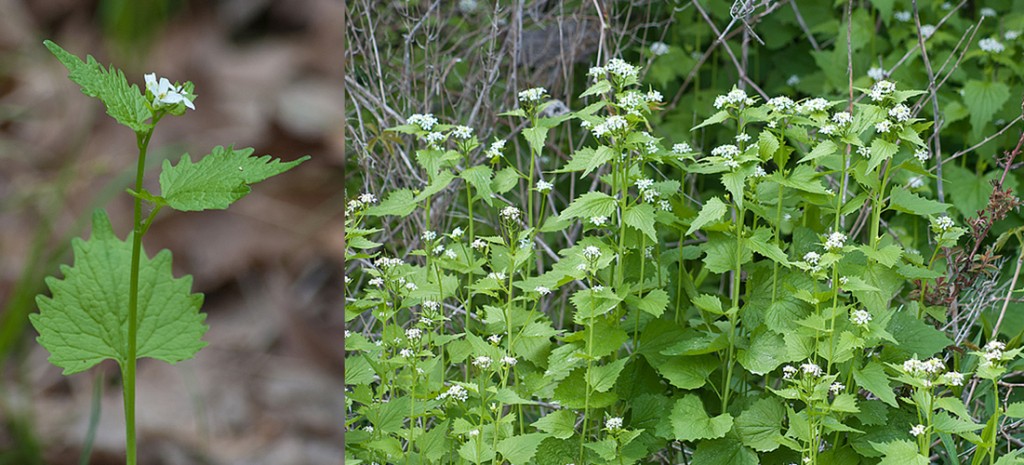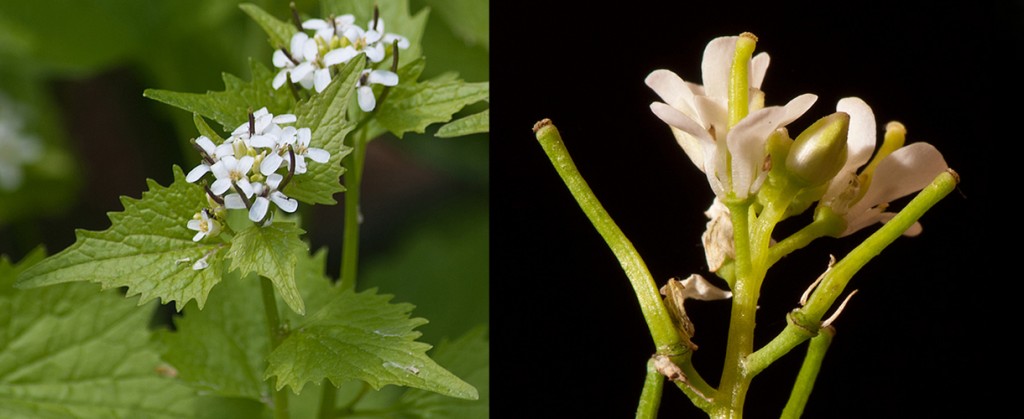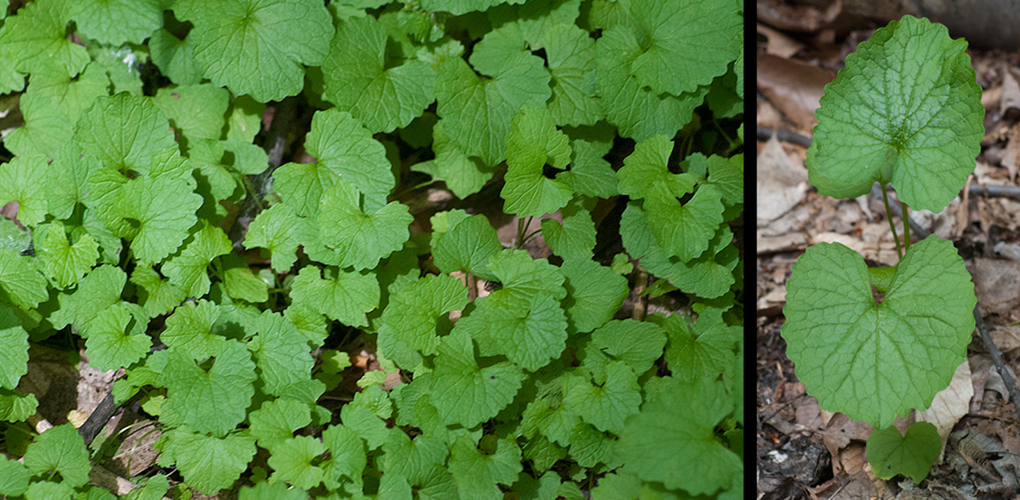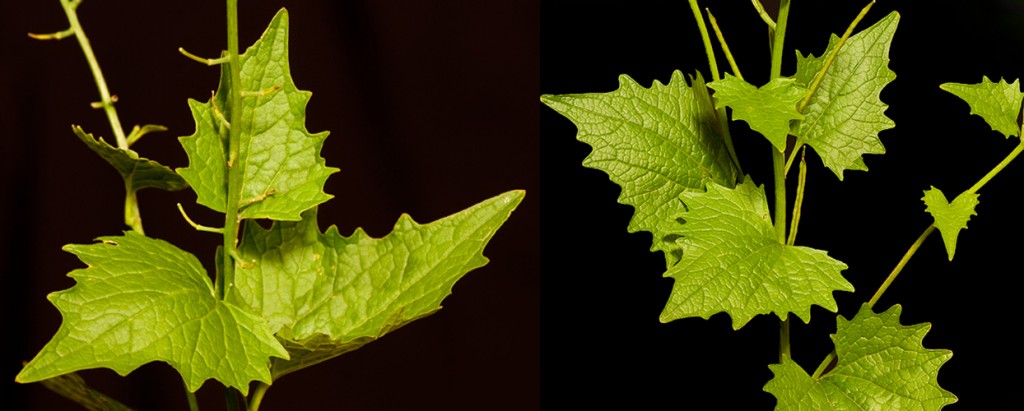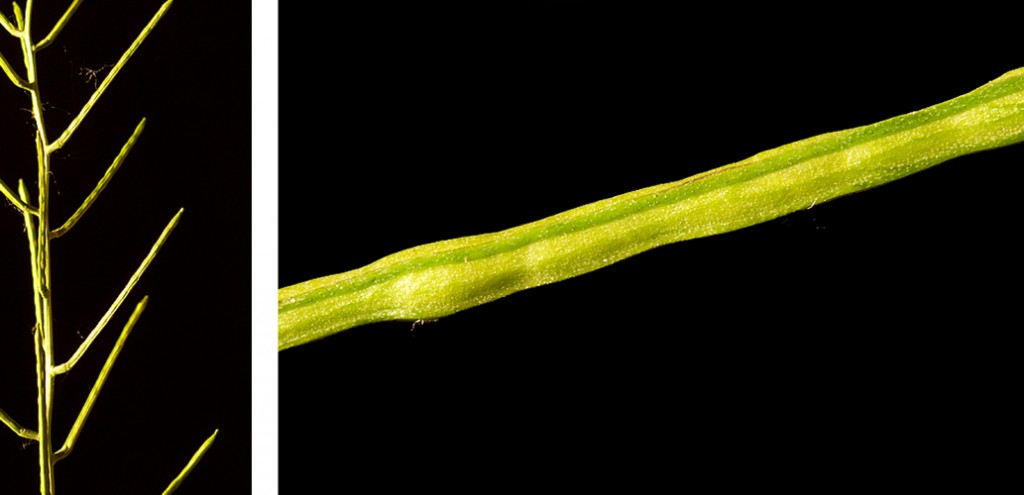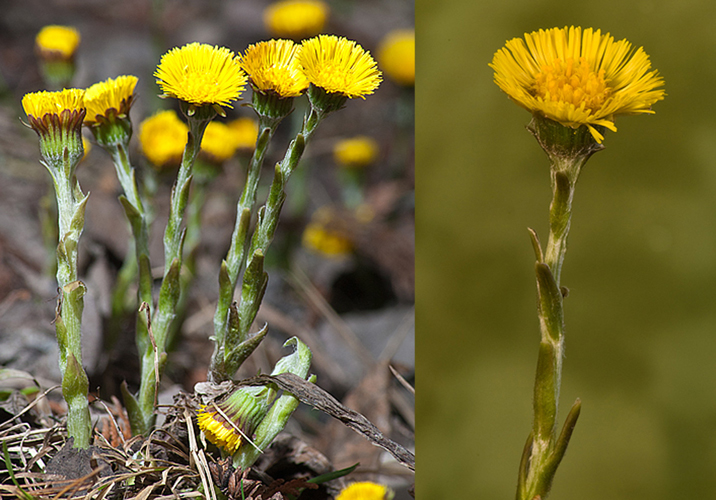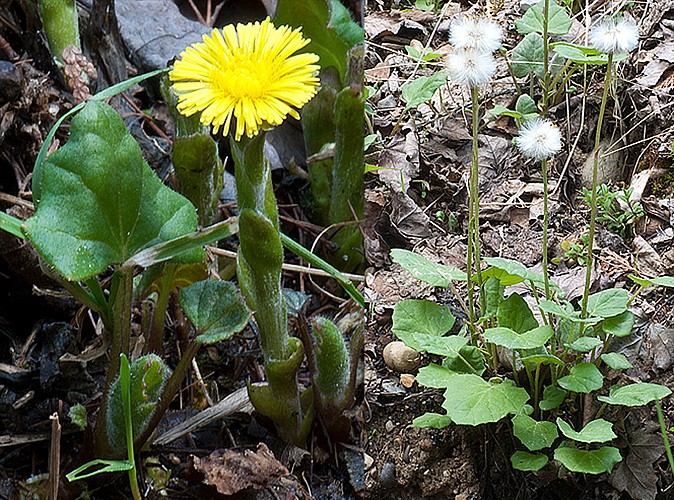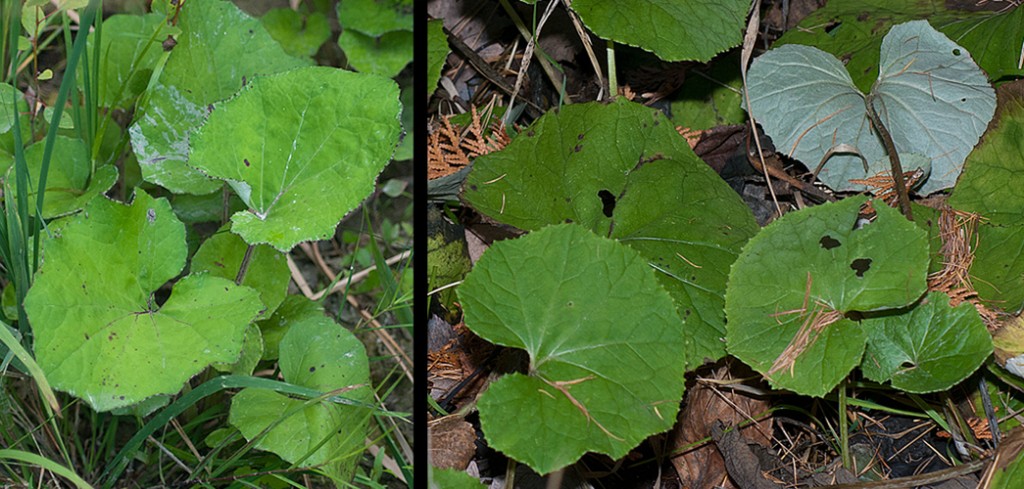Garlic Mustard’s (Alliaria petiolata) native range is Europe. It has invaded North Africa, India, and North America. The first U. S. record is from Long Island in 1868 and it reached Michigan in 1956. Imported for its supposed medicinal values it escaped cultivation and became a serious pest in many woodlands. I saw a large patch of it in 1978 in Rock Cut State Park in northern Illinois. Several acres in size this patch was shading out a colony of Prairie Trillium (Trillium recurvatum). I first saw the plant in Michigan at Warren Dunes State Park in 1981. It was a small patch consisting of a dozen plants. The plant has increased its range and is now found throughout the state.
The plant is easy to identify. It is one to two feet tall (0.3-0.6m), the flowers are white with four petals that narrow at the base, and the leaves are heavily toothed, more or less triangular shape with the veins inset into the upper leaf surface. The seed pods are long and narrow with small ridges, and are similar to native species. They develop quickly, often elongating before the petals drop, and they will continue to develop after the plant is pulled.
It is a biennial, meaning that it flowers in its second growing season. The basal leaves form the first year and are more rounded than the stem leaves on the flowering plant. Garlic Mustard seed germinates at low temperatures (32 degrees F). This gives the seedlings a head start over other native species.
Garlic Mustard is allelopathic and destroys the connections between native tree seedlings and mycorrhizal fungi (Stinson K. A, Campbell S. A., Powell J. R. Callaway R. M. 2006). This prevents completion from native tree species and perhaps other plants.
For additional reading regarding Garlic Mustard and its control, see the U. S. Forest service fact sheet.
Copyright 2013 by Donald Drife
Webpage Michigan Nature Guy
Follow MichiganNatureGuy on Facebook

